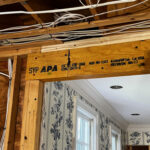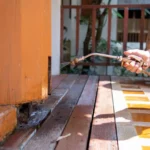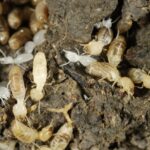Are Traditional Fumigation Methods Safe for Pets?
No, traditional fumigation methods are not safe for pets and require complete evacuation during treatment. These powerful chemical treatments pose serious health risks to animals and must be approached with extreme caution when considering pest control termite treatment options.
Traditional fumigation involves sealing an entire structure with tarps and releasing toxic gases—typically sulfuryl fluoride or methyl bromide—that penetrate every crack and crevice to eliminate termite colonies. The process works by suffocating termites at all life stages, making it one of the most comprehensive sydney termite control solutions for severe infestations. Treatment typically lasts 24 to 72 hours, during which the property remains completely uninhabitable.
How Toxic Are Fumigation Chemicals to Pets?
The chemicals used in traditional fumigation are highly toxic to all living organisms, not just termites. Sulfuryl fluoride, the most common fumigant, disrupts cellular respiration in mammals, including pets. Even trace amounts can cause respiratory distress, neurological damage, and potentially fatal poisoning.
Pets face particular vulnerability due to their:
- Smaller body mass – requiring less chemical exposure to reach toxic levels
- Lower breathing height – placing them closer to heavier-than-air gas concentrations
- Heightened sensitivity – making them more susceptible to respiratory irritation
- Exploratory behaviour – increasing likelihood of contact with residual chemicals
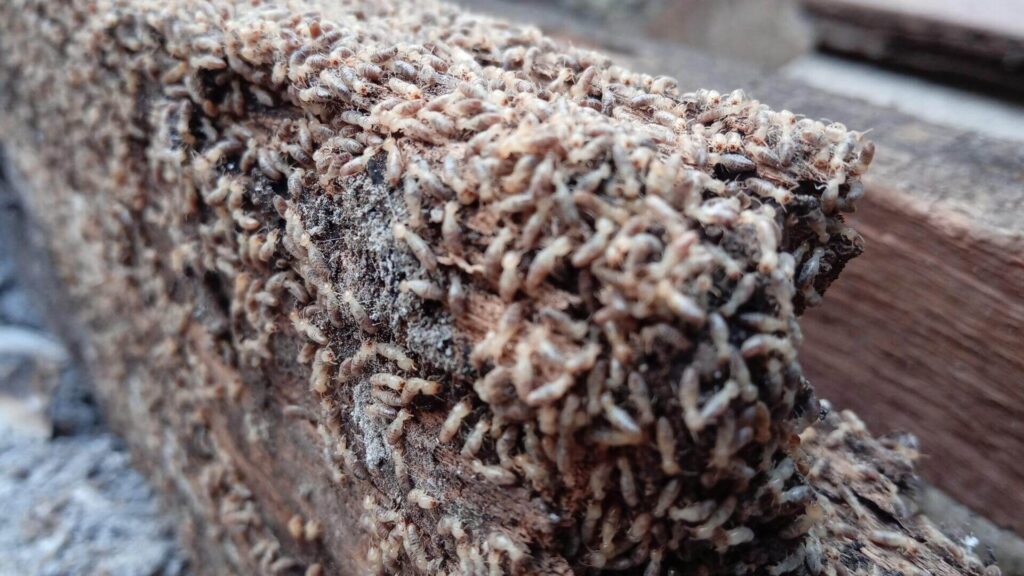
What Health Risks Do Fumigation Chemicals Pose?
Exposure to fumigation chemicals can trigger immediate and long-term health consequences in pets. Acute symptoms include difficulty breathing, excessive drooling, vomiting, tremors, and seizures. Chronic exposure—even at low levels—may lead to liver damage, kidney dysfunction, and neurological impairment.
Birds and small mammals face the highest risk due to their rapid metabolic rates and sensitive respiratory systems. Cats are particularly vulnerable because they lack certain liver enzymes needed to metabolise toxic compounds efficiently. Dogs may suffer from prolonged exposure if they return to treated areas too soon.
Have Pets Been Harmed by Fumigation Treatments?
Documented cases reveal the serious dangers of improper fumigation protocols. In 2018, a California family’s two dogs died after a pest control company conducted a fumigation without properly notifying the residents. Similarly, in 2021, an apartment complex in Florida faced legal action when several cats were found dead following a fumigation incident.
These incidents highlight the critical importance of adhering to safety guidelines and ensuring that all occupants—human and animal—are evacuated before any fumigation takes place.
What Are Modern Alternatives to Fumigation That Are Safer for Pets?
Modern termite treatments have evolved to prioritise both effectiveness and safety, with baiting systems and chemical barriers leading the charge. These alternatives eliminate the need for whole-house fumigation, allowing pets to remain in their homes with minimal disruption whilst still achieving comprehensive termite control.
How Do Baiting Systems Protect Pets?
Baiting systems work by strategically placing tamper-resistant stations around your property’s perimeter. These stations contain cellulose material laced with slow-acting termiticides that worker termites carry back to their colony, eventually eliminating the entire population.
The design of modern baiting systems incorporates multiple pet-safety features:
- Locked, secured stations prevent curious pets from accessing the bait material
- Below-ground placement keeps stations out of sight and reach of animals
- Targeted delivery ensures only termites encounter the active ingredients
- Low-toxicity formulations pose minimal risk even if accidental exposure occurs
Professional pest control technicians install these stations at regular intervals, typically every 3-4 metres around your home’s foundation. The stations remain in place for continuous monitoring, with technicians checking them quarterly to assess termite activity and replenish bait as needed.
What Makes Chemical Barriers Different From Fumigation?
Chemical barriers create a protective zone around your home’s foundation using liquid termiticides applied directly to the soil. Unlike fumigation gases that permeate every space, these barriers remain localized to specific treatment areas.
The application process involves:
- Drilling small holes along your home’s perimeter
- Injecting termiticide into the soil at foundation depth
- Creating a continuous treated zone that termites cannot cross
- Sealing entry points to prevent future infestations
Modern chemical barriers use non-repellent formulations that termites cannot detect. As termites pass through the treated soil, they unknowingly pick up the termiticide and transfer it to colony members through contact and grooming behaviours.
Why Are These Treatments Safer Than Traditional Methods?
The toxicity profile of modern termite treatments differs significantly from older fumigation chemicals. Contemporary formulations target insect nervous systems specifically, with reduced impact on mammals.
Are There Pet-Safe Natural Remedies Available for Termite Control?
Yes, there are several eco-friendly termite control methods that are safe for pets and can effectively manage termite problems. These natural solutions include treatments made from plants and physical barriers that prevent termites from entering your home.
Natural Termiticides That Protect Pets
There are pet-safe alternatives to synthetic chemicals that can be used to control termites. These include:
- Orange oil: This oil is derived from oranges and contains a compound called d-limonene. When applied directly to infested wood, it dissolves the exoskeletons of termites, causing them to dehydrate and die. However, this method is most effective for localized treatments rather than entire houses.
- Neem oil: This oil comes from the seeds of the neem tree and contains a compound called azadirachtin. This compound disrupts the growth and reproduction of termites without harming mammals. Pet owners can use this treatment confidently as it breaks down quickly in the environment and poses no risk of poisoning if pets come into contact with treated areas.
Another option that is safe for pets is diatomaceous earth. This powdery substance is made up of fossilised algae and works by physically damaging the exoskeletons of termites. Food-grade diatomaceous earth is safe enough for human consumption, making it an excellent choice for households with curious pets who might investigate treated areas.
Physical Barriers for Long-Term Protection
In addition to natural remedies, there are also non-chemical methods that can provide long-term protection against termites. These methods involve creating physical barriers that prevent termites from accessing your home:
- Steel mesh barriers: Installing steel mesh barriers during construction or renovation can create a shield around the perimeter of your building. The holes in the mesh are too small for termites to penetrate but still allow water drainage. Pets can safely interact with these barriers as they contain no toxic substances.
- Crushed granite or basalt rock: Placing crushed granite or basalt rock around your foundations can create a barrier that termites cannot tunnel through. The angular particles are too large for termites to move and too small to build tunnels between. This method requires no maintenance and poses zero risk to pets who may dig or play near treated areas.
- Concrete slabs and proper grading: Ensuring that your concrete foundations have no cracks and maintaining proper grading can eliminate soil-to-wood contact points that termites exploit.
What Precautions Should Homeowners Take When Treating Their Homes for Termites With Pets Present?
Removing pets from the treatment area for at least 3-4 hours is the most critical step homeowners can take during termite treatment. This evacuation period allows chemicals to settle and reduces the risk of direct exposure through inhalation or contact with freshly applied products.
Essential Pre-Treatment Steps
Before the pest control team arrives, homeowners should:
- Relocate pet food bowls, water dishes, and toys from treatment zones
- Cover aquarium tanks with thick towels and turn off air pumps to prevent airborne chemicals from entering the water
- Remove pet bedding and wash it thoroughly after treatment completion
- Store pet medications and supplements in sealed containers away from treatment areas
During and After Treatment Protocol
Ventilation plays a vital role in precautions during termite treatment with pets. Opening windows and doors for 2-3 hours after the pest control service completes their work helps dissipate any lingering chemical odours and reduces indoor air concentration of treatment products.
Pet owners should request detailed information from their pest control provider about:
- Specific chemicals being used and their pet safety profiles
- Recommended re-entry times for different pet species
- Areas where treatments will be most concentrated
- Any surfaces that require cleaning before pets return
Special Considerations for Different Pets
Birds and small mammals like hamsters or guinea pigs are particularly sensitive to airborne chemicals. These pets require extended evacuation periods, often 24-48 hours, depending on the treatment type. Cats, known for grooming themselves frequently, need extra attention to ensure treated surfaces are completely dry before they return home, preventing ingestion of residues through licking their paws.
Homeowners should inspect treated areas for any visible residue or wet spots before allowing pets back inside, ensuring all surfaces are dry to the touch.
How Can Professional Pest Control Services Ensure Pet Safety During Termite Treatments?
Professional pest control services employ multiple strategies to protect pets during termite treatments. Licensed technicians assess each property individually, identifying pet areas and creating customised treatment plans that minimise exposure risks.
1. Locked Bait Stations
These tamper-resistant containers prevent curious pets from accessing toxic substances whilst allowing termites to feed on the bait inside. The stations are strategically placed in areas inaccessible to pets, such as underground or within wall cavities.
2. Pre-Treatment Consultations
During these consultations, technicians discuss important details about the pets in the household, including their species, ages, and health conditions. This information helps the technicians tailor the treatment plan to minimise any potential risks to the pets.
3. Clear Communication Protocols
Professional pest control services understand the importance of keeping homeowners informed about the treatment process. They establish clear communication protocols to ensure that homeowners are aware of evacuation timeframes and re-entry schedules.
4. Application Timing
To further protect pets during termite treatments, professional pest control services schedule the application of products at times when pets can be safely removed from the premises. This ensures that there is no overlap between the treatment process and the presence of pets.
5. Barrier Treatments
Instead of applying treatments directly in living spaces where pets roam, professional pest control services often utilise barrier treatments. These treatments are applied to exterior foundations, creating a protective barrier against termites while minimising any potential exposure to pets indoors.
6. Low-Toxicity Formulations
When selecting products for termite control, reputable pest control companies prioritise low-toxicity formulations specifically designed for households with pets. These formulations are effective in eliminating termites while posing minimal risk to the health and safety of pets.
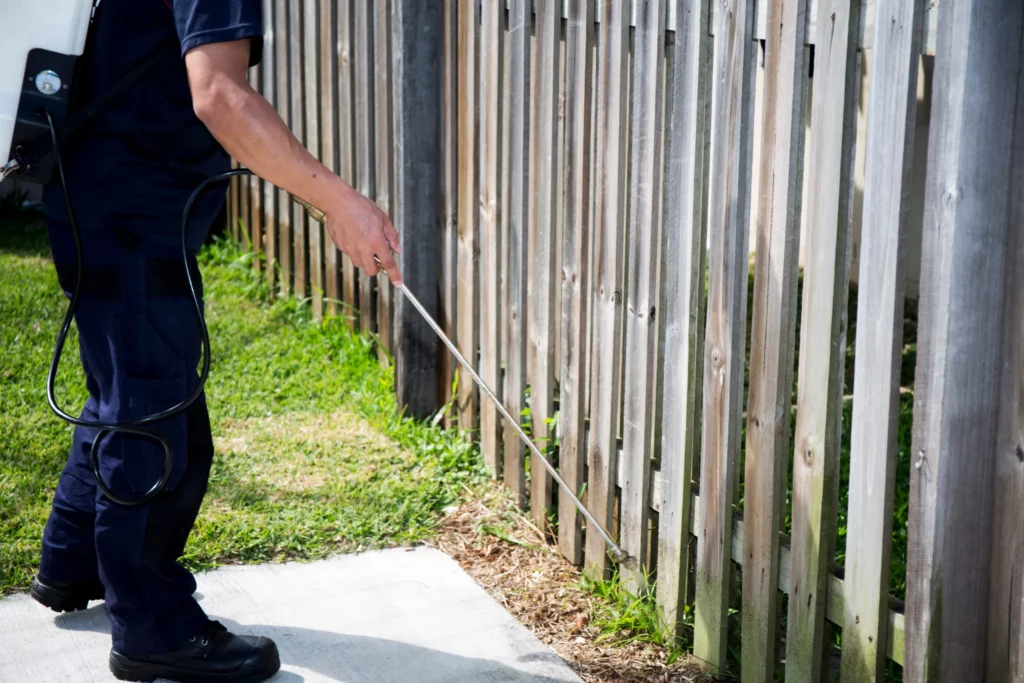
7. Detailed Product Records
Reputable pest control companies maintain detailed records of all products used during their treatments. This includes keeping Material Safety Data Sheets (MSDS) on file, which outline specific precautions related to pets for each chemical used.
8. Specialised Technician Training
Technicians employed by professional pest control services receive specialised training in identifying areas that may be sensitive to pets. This training equips them with the knowledge and skills necessary to adjust their application methods accordingly, ensuring maximum effectiveness while minimising any potential harm to pets.
9. Post-Treatment Protocols
After completing a termite treatment, professional pest control services implement post-treatment protocols aimed at safeguarding pet safety:
- Thorough ventilation of treated spaces
- Confirmation that all surfaces have dried completely before allowing pets back inside
In some cases, these services may also offer follow-up inspections as an additional measure to verify that no residual chemicals remain in areas accessible by pets.
When addressing concerns about the safety of pest control products for pets—specifically regarding termite treatments—professional services prioritise transparency with homeowners:
- Providing clear information about chemical compositions used
- Outlining potential risks associated with those chemicals
In instances where pre-existing health conditions or heightened sensitivities exist among certain animals within a household (such as dogs or cats), these professionals recommend alternative methods whenever possible so as not compromise their wellbeing.
Many companies now offer pet-friendly guarantees, promising to use only approved low-toxicity products and providing written documentation of all substances applied during each individual treatment session conducted on-site at client properties . This level accountability ensures homeowners can make informed decisions regarding their furry companions’ wellbeing while effectively eliminating persistent termite infestations plaguing their homes .
Related : Rodent Removal Sydney: How Much Does It Cost and What’s Included?


